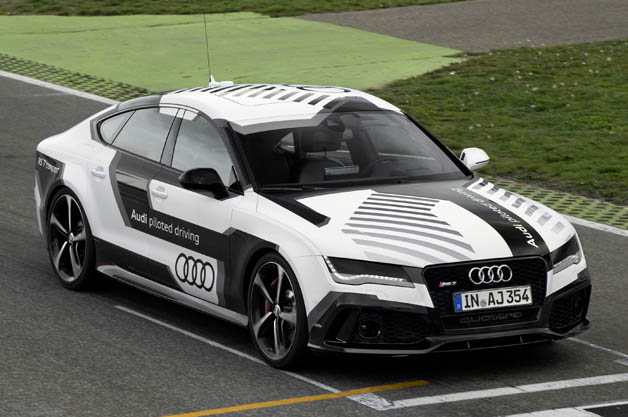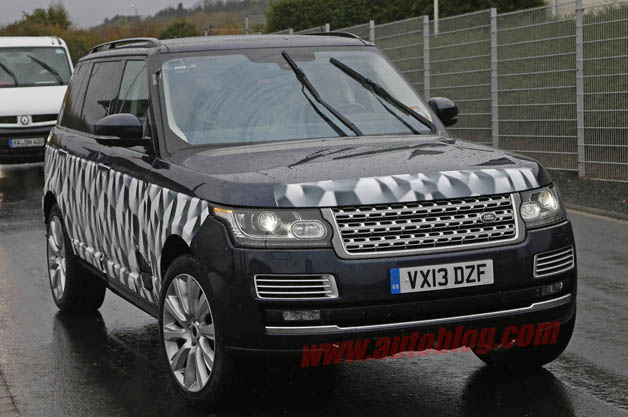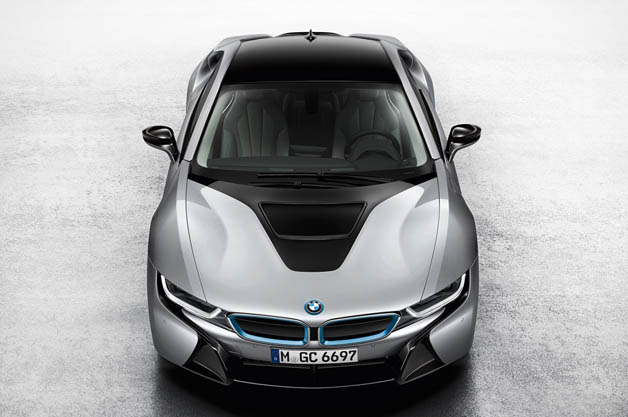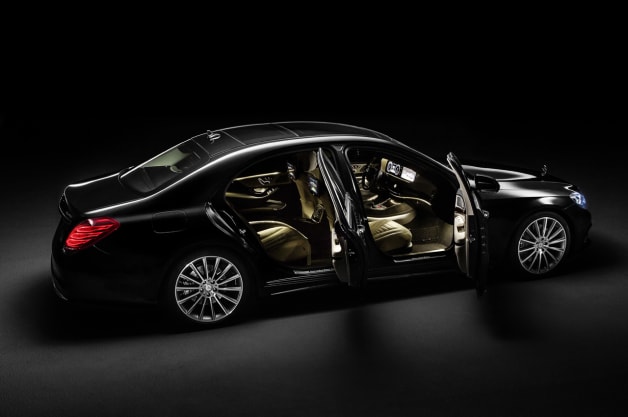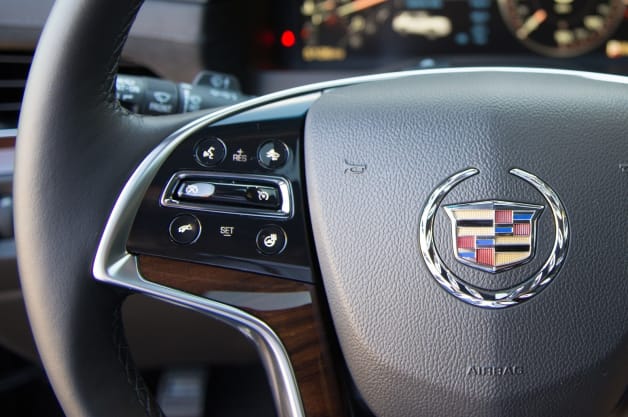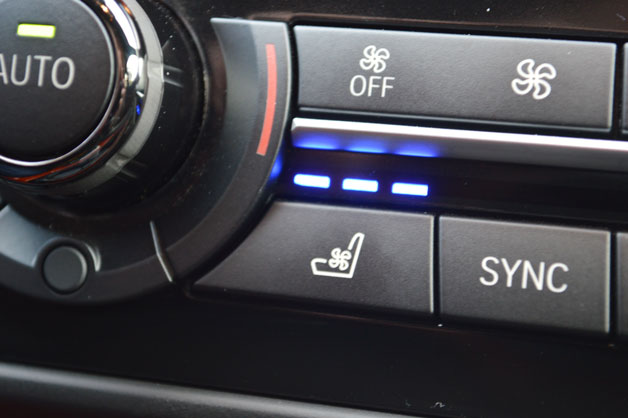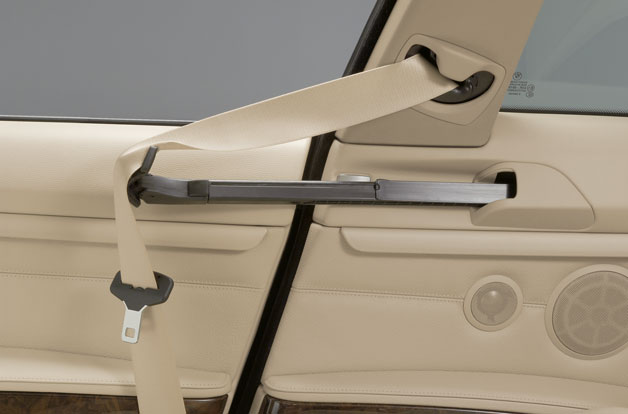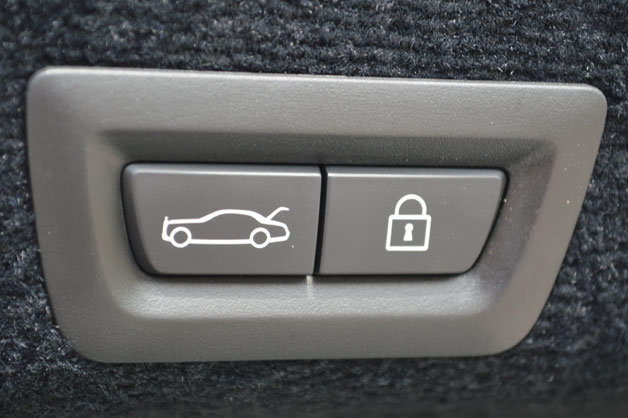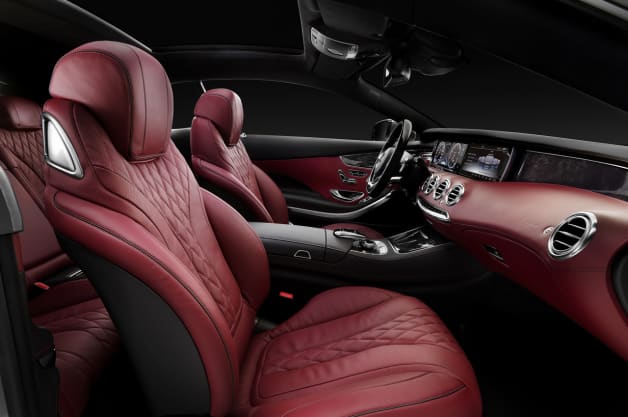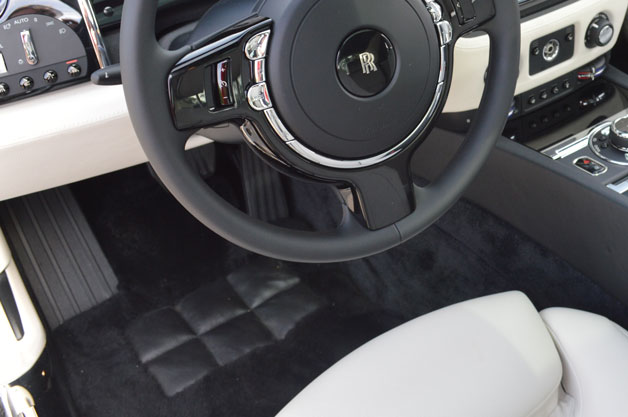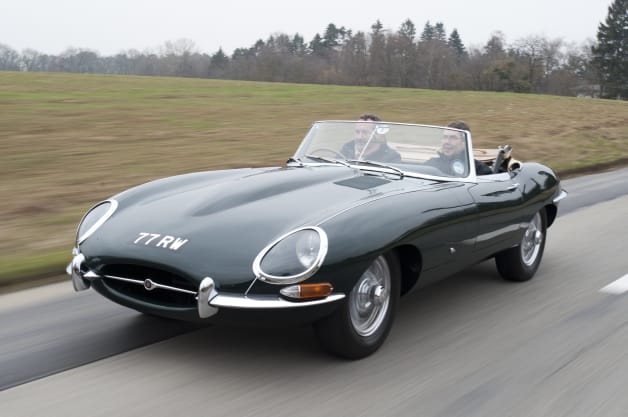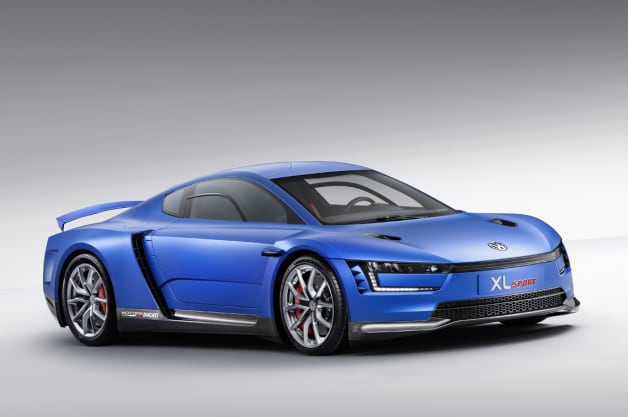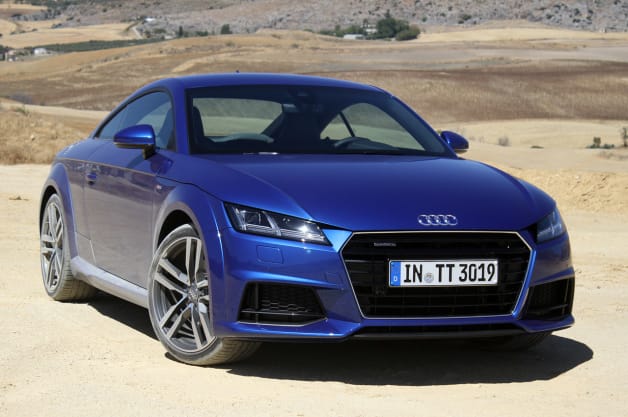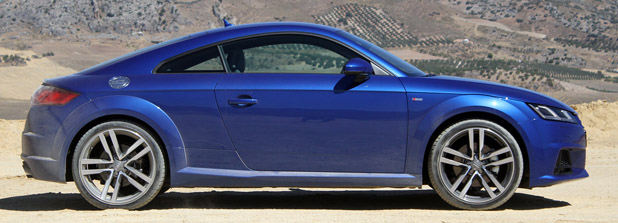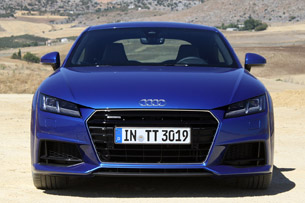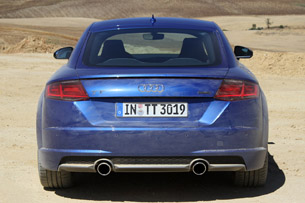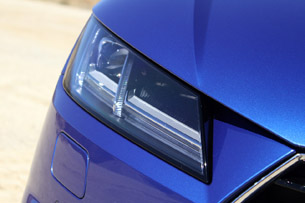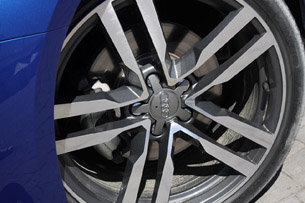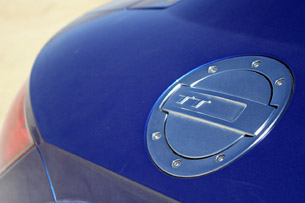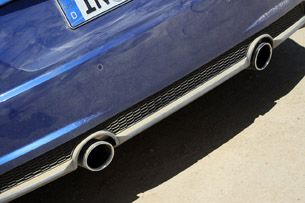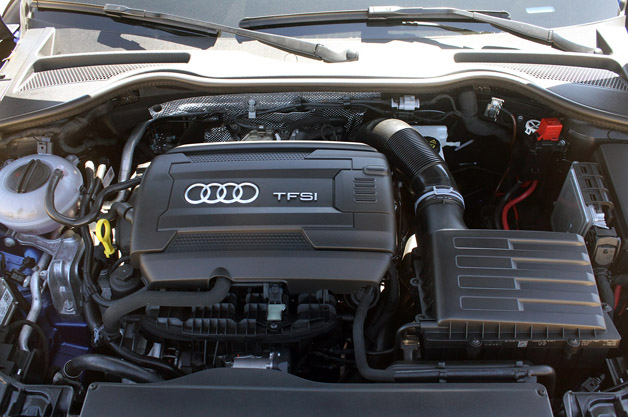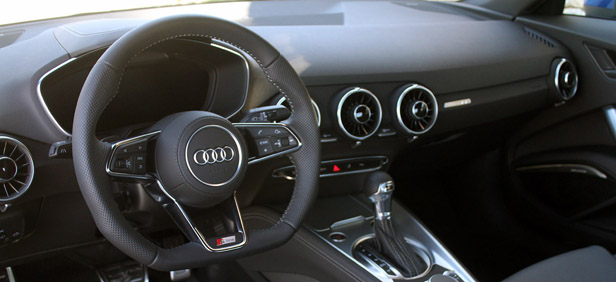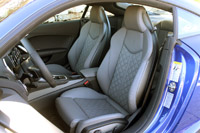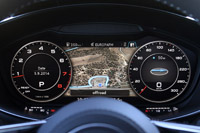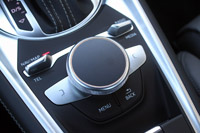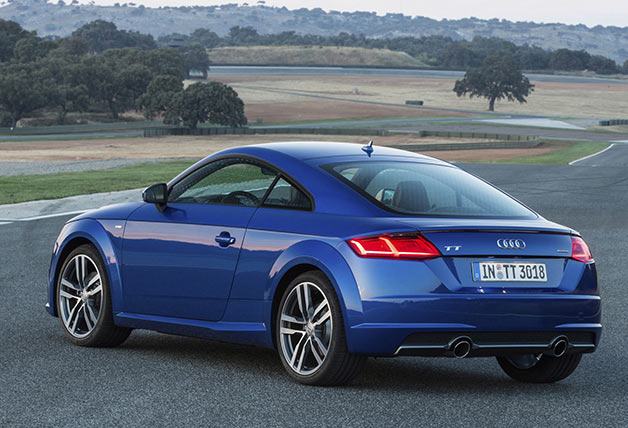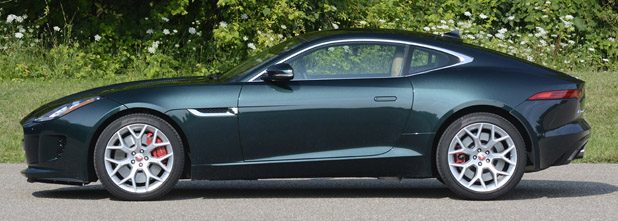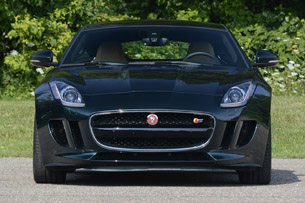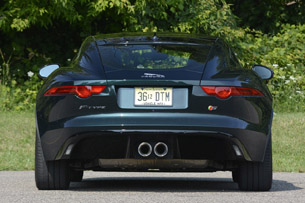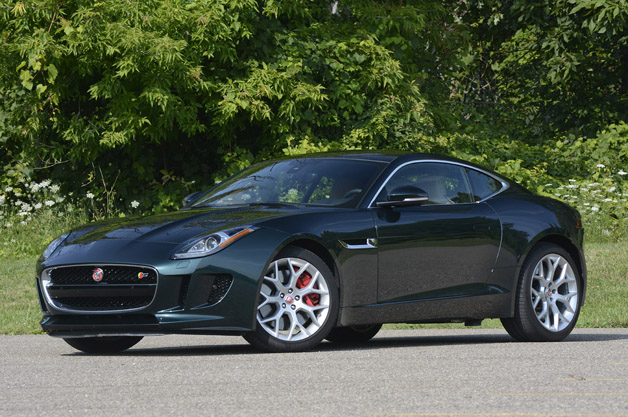
My first, ill-fated job in the auto world was at an exotic
car dealer in metro Detroit. The job itself sucked, but the cars, they were
exceptional. Amidst a sea of Tiptronic
Porsche Boxsters, first-gen
Mercedes-Benz SLKs and
abused second-generation
Range Rovers, there
were some real gems.
In particular, I have fond memories of a trio of undrivable Jaguar E-Types. Two
Series II coupes as well as a Series III convertible (that featured a mostly
broken roof) spent the entirety of my brief tenure at the dealership in the
back of the musty service garage. I'd make side trips through there just to see
the trio of E-Types, which rarely failed to put a big, ridiculous grin on my
face.
Since that time in the summer of 2005, there hasn't been a single Jag that's
been capable of eliciting the same goofy smile. Not the
XFR-S, with its un-aristocratic
wing, nor the
XKR-S. At
the
2013 Los Angeles Auto
Show, though, Jaguar introduced this
F-Type Coupe. Sure, the
droptop model had been around for a bit, but I thought it was the new coupe
that most captured the E-Type's classic aesthetic, with a swooping roofline,
those gorgeous rear haunches and a long, powerful hood. I had to
drive one.
It was lucky, then, that a hardtop F-Type V6 S arrived in my driveway not long
ago. I'm not sure who at press fleet operations drew the lucky assignment of
configuring the company's F-Type media cars, but I'd like to tip my hat to
them. My tester showed up in as classically perfect a color scheme as you'll
find – British Racing Green with tan-and-black interior upholstery. The 19-inch
Centrifuge wheels it wore did their part, too, with the alloys being the
closest thing Jaguar offers to the original multi-spoke wheels of the E-Type.
These aesthetic decisions only served to heighten the attractiveness of the
Coupe. This is a stunning vehicle in person, with a bevy of interesting curves
and angles that force you to stop, linger and stare. The muscular haunches at
the back are complemented by the chiseled hood and aggressive front fascia. The
roofline forms a single, unbroken arc, as it forms in the A-pillars and runs to
its abrupt end at the F-Type's tail. The wide, slim, wraparound taillights are
intriguing at night, and are unlike anything else on the road, while the
headlights and their LED accents give off a predatory look that similar designs
like the
Chevrolet
Corvetteand
Dodge Viper only
wish they could emulate.
This is a stunning vehicle in person, with a bevy of
interesting curves and angles that force you to stop, linger and stare.
The cabin is an equally stylish place. My tester boasted the
extended leather pack, which I'll admit is a rather misleading name. It should
be called the Leather, Leather Everywhere Pack. The headliner, dash, seats
(obviously), steering wheel and door panels are all finished in hide. The only
place of note that isn't covered in leather is the center stack, which also
happens to be the cabin's sole low point. While the rest of the interior feels
suitably luxurious, the plastic-adorned home of the climate controls,
infotainment and vehicle systems is decidedly a letdown.
Ignoring that qualm, it's quite clear that the F-Type's cabin is a place for
the business of driving. The seat's H-point (the intended location of an
occupant's hip) is low and aggressive, and along with my tester's optional,
two-piece performance buckets, the cockpit is plenty able to gear one up for a
proper thrashing. Those optional thrones, by the way, are must-haves, offering
adjustable bolstering and lumbar to deliver plenty of support without being too
aggressive or uncomfortable. The driver-oriented cabin is separated not just by
the transmission tunnel and center console, but by an "oh crap!"
handle for the passenger. This segmentation of such a compact space adds to the
business-minded alignment of the cabin, leaving the interfaces for the (still
lackluster) touchscreen infotainment system, climate controls, vehicle systems
and shifter easily at hand for the driver. Visibility is far better than one
might expect of a modern sports car, with ample space over the shoulders and
surprisingly good sightlines through the tight rear window, at least until the
speed-sensitive active rear spoiler rises and chops out a good portion of the
rear view.
Flip forward the reverse-opening bonnet of the F-Type and look past the
pedestrian plastic cladding of the engine, and you'll find Jaguar Land Rover's
corporate 3.0-liter supercharged V6 on my BRG test vehicle. In S spec, it
manufactures 380 horsepower and 339 pound-feet of torque, with peak twist available
higher in the rev range, from 3,500 to 5,000 rpm. I've sampled this engine in
the
Land Rover LR4 and
Jaguar XJ, and I'm pleased to
report that it's far better in this sporting application.
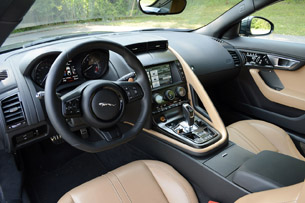
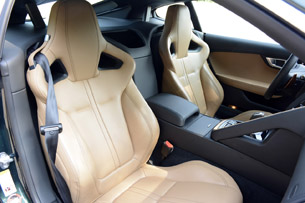
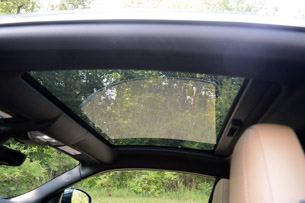
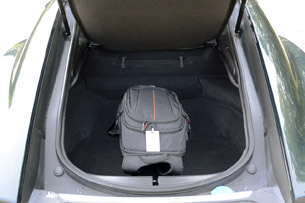
If you're in the market for an F-Type and are looking at the 550-horsepower,
supercharged, 5.0-liter V8 model, I'd strongly recommend you at least give some
consideration to the mid-range V6 S. The power on offer here will not knock
your socks off quite like the V8, but this engine is still plenty powerful and
its lighter weight offers the promise of better balance.
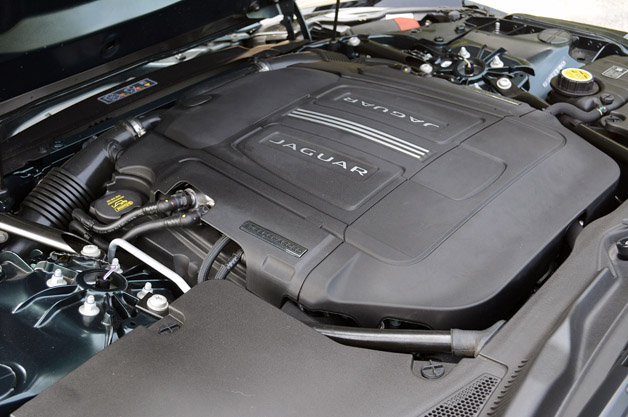
These chromed tubes may as well have been plucked from
mortar launchers, as much like their military counterparts, they excel at
making people far away take notice.
Set to Dynamic mode, tipping into the sharpish throttle
requires a degree of care at first, as there's enough power at your disposal
for the car's nannies to sic the traction control on you. Dig in carefully,
though, and the engine's power is eager to make its way to the road. The tach
can and will climb quickly if you're assertive with the skinny pedal, and
before long, you'll find yourself reacting with a tug of the right paddle.
60 miles per hour arrives in a manufacturer-estimated 4.8 seconds, although it
feels quicker than that – 4.5 to 4.6 seconds seems a bit more reasonable. The
top speed, meanwhile, is 171 mph. Despite this quickness, the F-Type is very
much in the Goldilocks zone when it comes to speed – it's never so fast as to
scare its driver, yet it can and will set your heart aflutter on every outing.
A large part of this sensation can be attributed to the stupendous sound
emanating from the F-Type's active exhaust system and the twin, center-mounted
pipes. These chromed tubes may as well have been plucked from mortar launchers,
as much like their military counterparts, they excel at making people far away
take notice. With the exhaust's baffles set to open, the sound is positively
primal, bellowing loudly and grandly under hard acceleration and then belching
with all the grace of a beer-swilling frat bro on upshifts. On overrun, the
F-Type does snap, crackle and pop far better than any tiny cereal cartoon
mascots. If you're ever lucky enough to get behind the wheel, just do yourself
a favor and drive it hard through a tunnel. Not only will your ears thank you,
but so will every motorist around you.
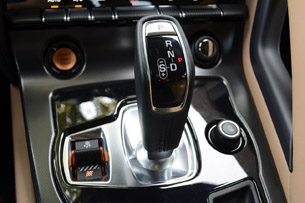
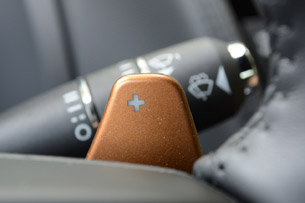
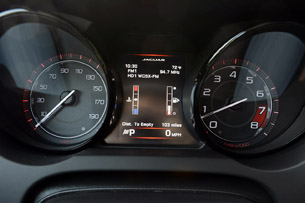
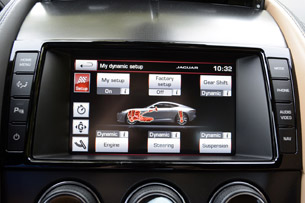
The fun comes when it's switched to Dynamic and control
moves from the computer to the Ignis Orange paddles mounted behind the steering
wheel.
Part of the F-Type's accelerative joie de vivre comes
from the eight-speed "Quickshift" automatic transmission. This is yet
another one of ZF's excellent eight-speed boxes, and – no surprise – it's not
stymied when used in a performance application. Left in full auto and in the
standard driving mode, it performs as admirably as any other eight-speed ZF
I've tested. The fun, though, comes when it's switched to Dynamic and control
moves from the computer to the Ignis Orange paddles mounted behind the steering
wheel. Shifts are noticeably quicker and more aggressive, with
wide-open-throttle upshifts coming with a suitably sharp jolt. On downshifts,
meanwhile, the trans will easily dispatch two or even three gears at once
following the requisite number of tugs on the left paddle. Those paddles themselves
look great thanks to their almost anodized appearance, although they could feel
slightly more premium and come with a crisper, more dramatic action.
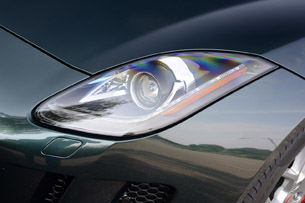
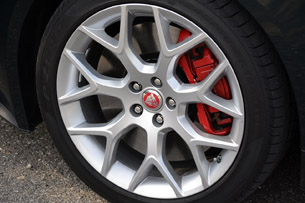
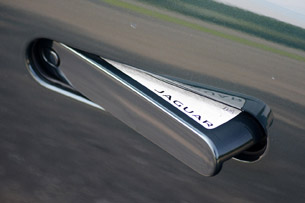
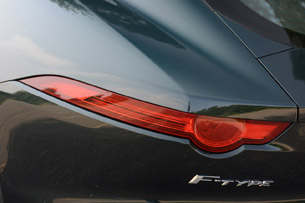
Despite sporting such an eager powertrain and suffering from an extremely
excitable right foot, I found the Jag to be a surprisingly efficient companion.
Over the course of roughly 300 miles of mixed but fast driving, the Jag's trip
computer showed that I was averaging about 19 miles per gallon, matching the
F-Type's city economy rating. Considering the way I was pushing the
supercharged V6 at every opportunity, I have no problem believing that less
exuberant driving will yield the 22-mpg average rating and even approach the
27-mpg highway number.
Opt for the mid-range F-Type V6 S Coupe, and you'll score a standard
sport-tuned, all-aluminum, double-wishbone adaptive suspension. Said suspension
can be set in one of two modes – Normal or Dynamic. Regardless of which mode
you select, I must say that the F-Type's ride, even on my tester's 19-inch
wheels, is on the choppy side. It's not, however, unbearable.
Set the suspension to normal and take to the highway, and the F-Type becomes a
rather docile GT car. You'll feel the road, and you'll be abundantly aware of
what's going on and just how big imperfections are, but it's not a disruptive,
abusive experience. Jag could have gone a bit softer in the standard mode, but
the ride firmness here is far from a deal breaker.
The 3,514-pound F-Type is a great dancer, with hardly any
body roll, squat or dive.
Setting the suspension to Dynamic, meanwhile, isn't really
recommended if you're just planning on cruising. Bumps and imperfections are
decidedly more noticeable and transmit even more clearly through those sport
seats. What's remarkable about either suspension mode, though, is how stable
the ride is. This is an excellently damped vehicle. There's just enough
vertical motion to cushion impacts without leaving the car feeling floaty, as
one might experience in the F-Type's older brother, the
XK. It gets even better, though,
when pushed hard.
The 3,514-pound F-Type is a great dancer, with hardly any body roll, squat or
dive. You can pitch it hard into corners and it will respond well, digging in
and getting around. It feels flat, planted and mostly neutral, although it's
very easy to get this car to misbehave by steering with the throttle, should
the mood strike. It is not, however, a terribly talkative kitty. I found
feedback through the chassis to be a bit on the limited side for a sports car,
as it can be difficult to interpret grip levels or balance through the chassis.
The Jag's steering is arguably worse than the suspension in terms of feedback,
which I found rather limited despite the rack's sharp, quick nature. This is a
vehicle that's very well setup for rapid directional changes, but it could be
better when it comes to letting the driver know what the front tires are doing.
I recommend you immediately step up to the car I've been
driving, the $77,000 V6 S.
With such a potent powertrain, it's reassuring to know that
Jaguar has really paid attention to the F-Type's brakes. 13.9-inch rotors are
standard at all four corners, but my tester boasted larger, 15-inch front pans
and red-painted calipers, as part of the optional Performance Pack. These
aren't the top braking option – that honor is reserved for the F-Type's $13,450
carbon-ceramic brakes. Still, the mid-level rotors and pads provide ample
stopping power, even from high speeds, while delivering the sort of steady,
easy-to-modulate pedal feel expected of a true sports car.
Prices for the F-Type Coupe start at $65,000, although you'll only be getting
the base 340-hp supercharged V6 variant at that price point. Instead, I
recommend you immediately step up to the car I've been driving, the $77,000 V6
S, with its 380-hp, standard adaptive dynamics and standard active exhaust,
among other goodies. $12K is a big jump, but it's absolutely worth it.
Of course, no one wants a basic, unoptioned F-Type. Instead, you'll want to dig
into the options catalog and snag some of the stuff found on this press car. My
car was fitted with the aforementioned Performance Pack, a $3,400 option that
adds a configurable Dynamic mode, the upgraded brakes, a flat-bottomed steering
wheel and the performance seats. The $2,700 Extended Leather Pack lines those
sporty thrones in softer leather, while the $1,800 Vision Pack 2 adds a slew of
safety features, including a rearview camera, blind-spot monitoring,
cross-traffic alert, front and rear park-distance sensors and intelligent,
adaptive headlights. An $1,800 Premium Pack 2 adds 14-way power adjustability
and dual-zone climate control, while a $1,200 panoramic roof allows a bit more
sunlight into the low-roofed cabin. A $600 Climate Pack adds a heating function
to the sporty steering wheel, while an extra $450 can be spent on HD and
satellite radio. Finally, that gorgeous British Racing Green paint demands an
extra $1,500. So equipped, putting the car you see above in your driveway would
cost $92,475, including a $925 destination charge.
For the average driver, the F-Type will provide more
satisfaction every day than the Porsche 911.
I'm going to close by addressing the rear-engined elephant
in the room – the
Porsche
911 Carrera. When optioned up to this sort of specification and price
point, the German is the F-Type's most natural challenger, but despite this, I
have come up with an exceptionally simple method of determining which you
should buy. If a car's driving dynamics and communicativeness are the most
important attributes driving your purchasing decision, buy the 911. You'll love
it.
If you have any other priorities, though, buy the Jag. Simply put, for the
average driver, the F-Type will provide more satisfaction every day than the
Porsche. It has 90+ percent of the 911's dynamic abilities, but its limits are
more approachable. Plus, the total F-Type package is far easier on both the
ears and – at least to me – the eyes. And as an added bonus, the V6 S is $7,300
cheaper than the base 911 and over $20,000 less costly than a 911 Carrera S
(you could actually snag the 550-hp F-Type R Coupe for just $100 more than the
400-hp Carrera S). It's important to note that those savings show up before
digging into Porsche's notorious options catalog.
Jaguar has well and truly hit a home run here, so if you're in the market for a
premium sports car, you'd do well to consider it.
source: Autoblog
by Brandon Turkus
Image Credit: Copyright 2014 Brandon Turkus / AOL
http://www.boscheuropean.com
